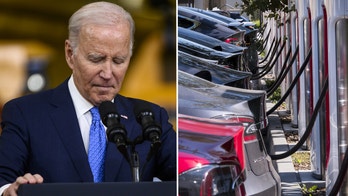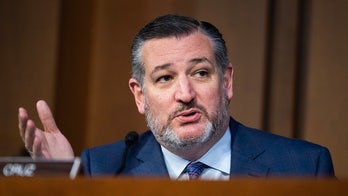The following is a transcript of the prepared remarks submitted by Ford CEO Alan Mulally before the Senate Banking Committee
Mr. Chairman, Senator Shelby and members of the Committee. Thank you for the opportunity to share Fords plan. We appreciate the valid concerns raised by Congress about the future viability of the industry. We hope that our submission and todays testimony will help instill confidence in Fords commitment to change, including our accountability and shared sacrifice during this difficult economic period.
On Tuesday, Ford Motor Company submitted to your Committee our comprehensive business plan, which details the companys path to profitability through an acceleration of our aggressive restructuring actions and the introduction of more high-quality, safe and fuel-efficient vehicles -- including a broader range of hybrid-electric vehicles and the introduction of advanced plug-in hybrids and full electric vehicles.
In addition to our plan, we are also here today to request support for the industry. In the near-term, Ford does not require access to a government bridge loan. However, we request a credit line of $9 billion as a critical backstop or safeguard against worsening conditions as we drive transformational change in our company.
One Plan: Beginning earlier this decade, we recognized the challenges the domestic auto industry faced and began implementing a disciplined global business plan to completely transform Ford, to improve our efficiency, cut costs and champion innovation. Our plan builds on the success we have seen in the past two years by accelerating the development of our new products that customers want and value. Our plan is anchored by four key priorities:
Aggressively restructure to operate profitably at the current demand and changing model mix;
Accelerate development of new products our customers want and value;
Finance our plan and improve our balance sheet; and
Work together effectively as one team, leveraging our global assets.
One Goal: Our team and plan is dedicated and focused on delivering profitable growth for all. While market, economic and business conditions recently have deteriorated worldwide at a rate never before seen, we have made substantial progress since we launched our plan in late 2006:
We obtained financing by going to the markets in December 2006 to raise $23.5 billion in liquidity, consisting of $18.5 billion of senior secured debt and credit facilities, substantially secured by all of our domestic assets, and $5 billion of unsecured convertible debt.
We have implemented our strategy to simplify our brand structure. As a result, we sold Aston Martin, Jaguar, Land Rover and the majority of our ownership of Mazda, and were considering our options for Volvo. We have divested other non-core assets. These sales have also helped our overall liquidity and generated $3.7 billion in additional capital to re-invest in the business.
To achieve maximum efficiency, we will have reduced our North American operating costs by more than $5 billion between year end 2005 and 2008.
We have taken painful downsizing actions to match capacity and market share in North America, including closing 17 plants and downsizing by 12,000 salaried employees and 44,000 hourly employees.
Ford is committed to building a sustainable future for the benefit of all Americans, and we believe Ford is on the right path to achieve this vision. I know the Members of the Committee have had an opportunity to review our plans over the last two days, so I will highlight new details about Fords future plans and forecasts:
Fords plan calls for an investment of approximately $14 billion in the U.S. on advanced technologies and products to improve fuel efficiency during the next seven years.
Based on current business planning assumptions -- including U.S. industry sales for 2009, 2010 and 2011 of 12.5 million units, 14.5 million units and 15.5 million units, respectively -- Ford expects both our overall and our North American automotive business pre-tax results to be break even or profitable in 2011.
As part of a continuing focus on building the Ford brand, we are exploring strategic options for Volvo Car Corporation, including the possible sale of the Sweden-based premium automaker. The strategic review is in line with a broad range of actions we are taking to focus on the Ford brand and ensure we have the resources to fund our plan. Since 2007, Ford has sold Aston Martin, Jaguar, Land Rover and the majority of its stake in Mazda. Half of the Ford, Lincoln and Mercury light-duty nameplates by 2010 will qualify as Advanced Technology Vehicles under the U.S. Energy Independence and Security Act -- increasing to 75 percent in 2011 and more than 90 percent in 2014. We have included these projects in our application to the Department of Energy for loans under that Act and we hope to receive $5 billion in direct loans by 2011 to support Fords investment in advanced technologies and products.
From our largest light duty trucks to our smallest cars, Ford will improve the fuel economy of our fleet an average of 14 percent for 2009 models, 26 percent for 2012 models and 36 percent for 2015 models -- compared with the fuel economy of its 2005 fleet. Overall, we expect to achieve cumulative gasoline fuel savings from advanced technology vehicles of 16 billion gallons from 2005 to 2015.
Next month at the North American International Auto Show in Detroit, we will discuss in detail Fords accelerated vehicle electrification plan, which includes bringing a family of hybrids, plug-in hybrids and battery electric vehicles to market by 2012. The work will include partnering with battery and powertrain systems suppliers to deliver a full battery electric vehicle (BEV) in a van-type vehicle for commercial fleet use in 2010 and a BEV sedan in 2011. We will develop these vehicles in a manner that enables it to reduce costs and ultimately make BEVs more affordable for consumers.
The 2007 UAW-Ford labor agreement resulted in significant progress being made in reducing the company's total labor cost. Given the present economic crisis and its impact upon the automotive industry, however, we are presently engaged in discussions with the UAW with the objective to further reduce our cost structure and eliminate the remaining labor cost gap that exists between Ford and the transplants.
As previously announced, Ford plans two additional plant closures this quarter and four additional plant closures between 2009 and 2011. We have announced our intent to close or sell what will be four remaining ACH plants. And we will continue to aggressively match manufacturing capacity to real demand.
Ford will continue to work to reduce its dealer and supplier base to increase efficiency and promote mutual profitability. By year end, we estimate we will have 3,790 U.S. dealers, a reduction of 606 dealers overall -- or 14 percent from year-end 2005 -- including a reduction of 16 percent in large markets. In addition, Ford has been able to reduce the number of production suppliers eligible for major sourcing from 3,400 in 2004 to approximately 1,600 today, a reduction of 53 percent. We eventually plan to further reduce the number of suppliers eligible for major sourcing to 750.
After reducing our workforce by 50 percent in just three years, we are also canceling all bonuses and merit increases for North America salaried employees -- including top management -- in 2009. And should Ford need to access funds from a potential government bridge loan, I will work for a salary of $1 a year -- as a sign of my confidence in the company's transformation plan and future.
We are moving ahead with plans we announced this summer to leverage the company's global product strengths and bring more small, fuel-efficient vehicles to the U.S. The plan includes delivering best-in-class or among the best fuel economy with every new vehicle introduced. We are also introducing industry-leading, fuel-saving EcoBoost engines and doubling the number and volume of hybrid vehicles.
This product acceleration will result in a balanced product portfolio with a complete family of small, medium and large cars, utilities and trucks. And we are increasing our investment in cars and crossovers from approximately 60 percent in 2007 to 80 percent of our total product investment in 2010.
Our plan is working, but there is clearly more to do -- something that is increasingly difficult in this tough economic climate. That is why we are seeking access to a $9 billion bridge loan, even though we hope to complete our transformation without accessing any of these funds. Despite the serious global economic downturn, Ford does not anticipate a liquidity crisis in 2009 -- barring a bankruptcy by one of our domestic competitors or a more severe economic downturn that would further cripple automotive sales and create additional cash challenges.
In particular, the collapse of one or both of our domestic competitors would threaten Ford because we have 80 percent overlap in supplier networks and nearly 25 percent of Ford's top dealers also own GM and Chrysler franchises. The impact of a bankruptcy also reaches beyond Ford and the U.S. auto industry. It would cause further stress to our domestic banking industry and private retirement systems. Goldman Sachs estimates the impact at up to $1 trillion.
We also believe effective restructuring involves a broader dialogue with all our stakeholders. President-elect Obama has indicated an interest in such a discussion. There are a number of complicated questions that will need to be considered, for example:
How do we create a dealer body that meets market demand and is profitable for all?
How do we develop a healthy and viable supplier base?
How do we work with the UAW to ensure that our cost structure is competitive with the foreign transplants?
How do we address the significant debt obligation of the domestic industry?
We are prepared to work together with this Committee and all of the parties to address these critical issues as part of our plan.
Ford has a comprehensive transformation plan that will ensure our future viability -- as evidenced by our profitability in the first quarter of 2008. While we clearly still have much more to do, I am more convinced than ever that we have the right plan that will create a viable Ford going forward and position us for profitable growth.
Thank you.




